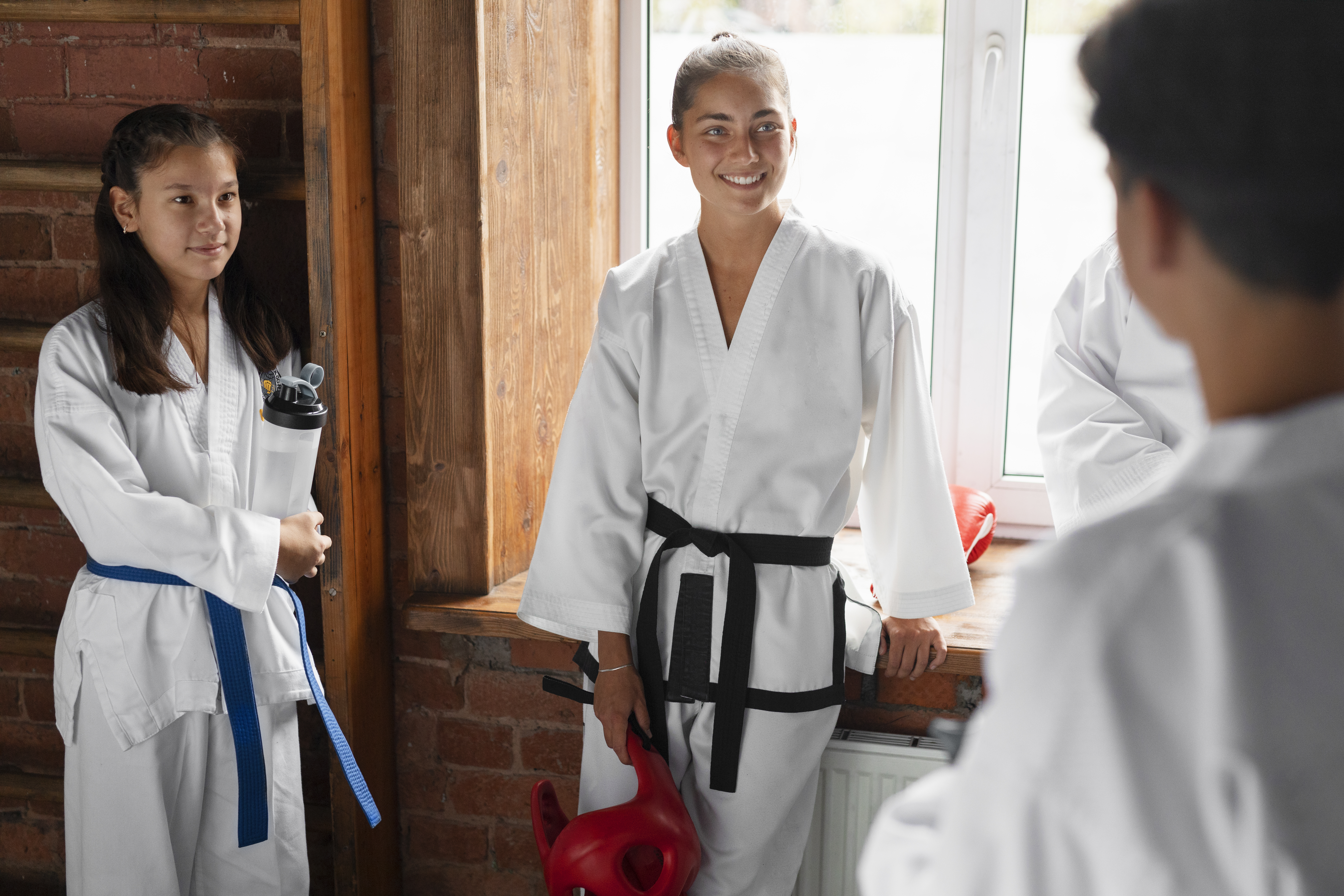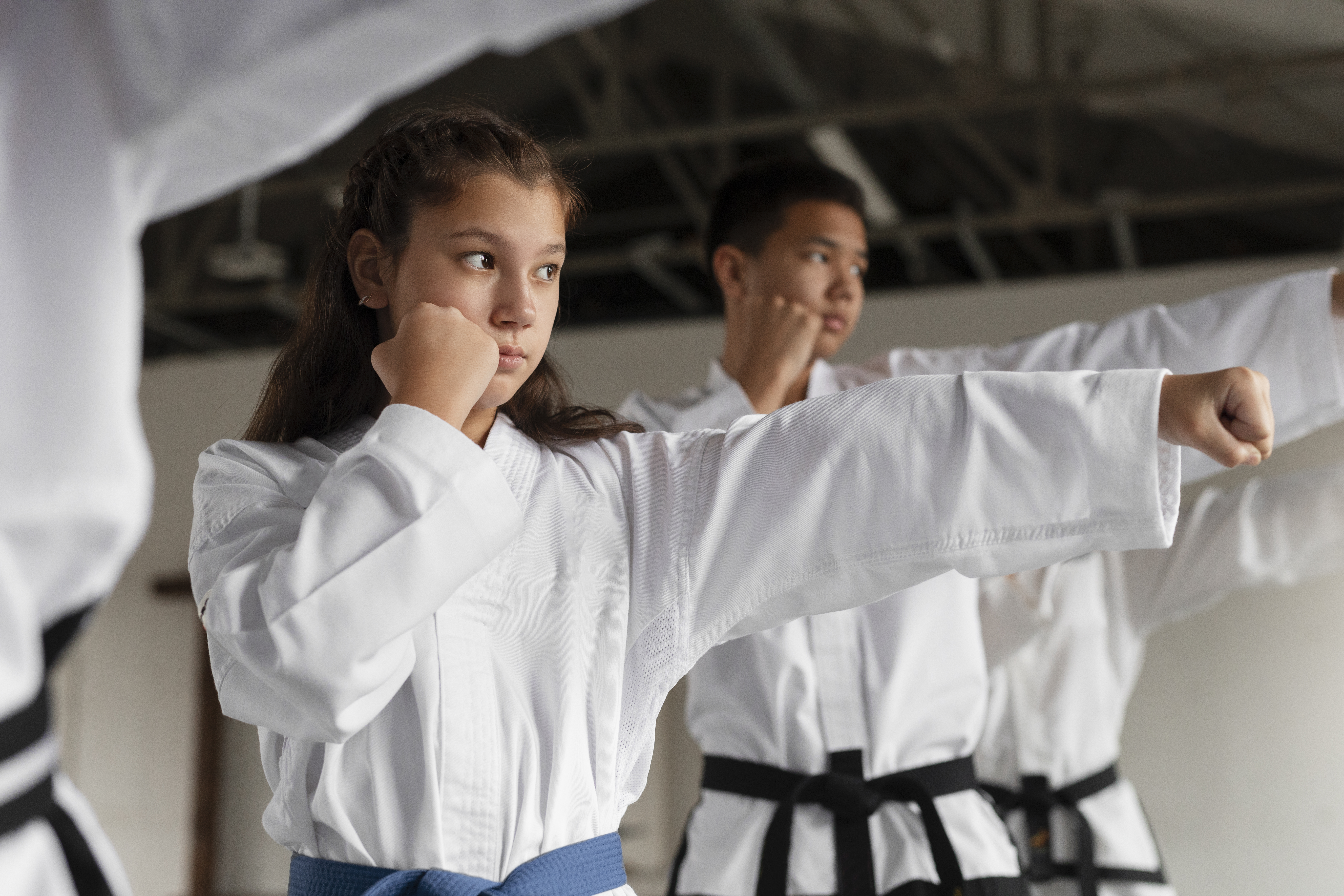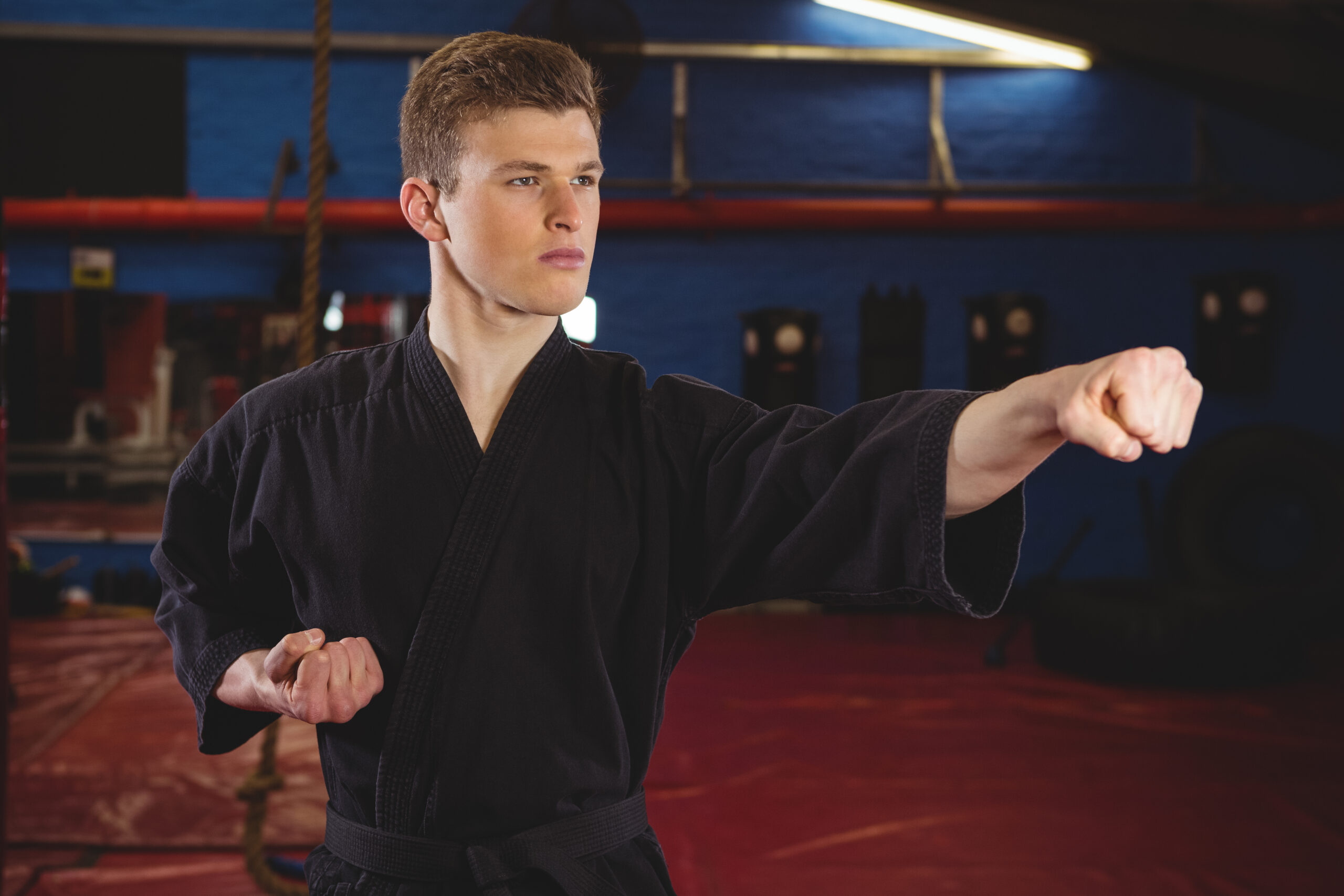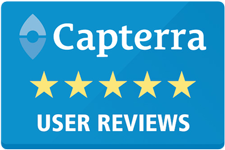Take Your Martial Arts School Online with this Virtual Framework
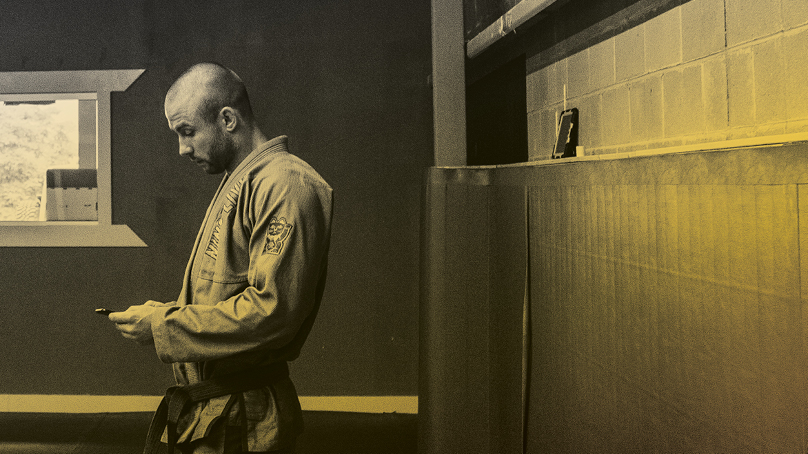

No matter how hard you try, you will not be able to replicate the experience your students get at your facility with virtual classes. Logging onto a Zoom call does not elicit the same biological response as walking through the doors of the academy and bowing at the edge of the mat. Attention to detail from instructors suffers when they can only see a three square-inch version of each student on their laptop screen. On top of that, physical classes provide cooperation of a partner to practice with, which the virtual world cannot accommodate. You are very likely swimming upstream if you’re trying to replicate this exact experience virtually. The key is to play a different game. You can develop a virtual student experience that is equally valuable and engaging, and it will justify the cost your students pay while they are unable to come into the facility.
Be an Educator
The martial arts are complex systems that are as intellectual in nature as they are physical. The vast majority of martial arts schools do not expose students to the big picture (their system and progression path) and instead give them access only to their immediate focuses. Without access to the bigger picture, the techniques and drills taught to students feel isolated and out of context. They show the student how to accomplish one task but not how that task fits into the broader developmental paradigm that will get them to the next belt or make them a more well-rounded practitioner. The COVID crisis is a perfect time to turn this approach upside-down by creating a series of virtual seminars educating students on your lineage and system.
Take Action:
- Step 1: Pull out your curriculum.
- Step 2: Chop up your curriculum into sections that would align with 60-minute educational sessions.
- Step 3: Assign coaches to teach each educational session and have them prepare an agenda.
- Step 4: Create your schedule for the series. Which days and times will you teach each session? Build out the series in Zen Planner’s schedule builder.
- Step 5: Create a video to share with your students explaining this seminar series, informing them of the schedule and prompting them to reserve their spot.
- Step 6: Check students in for the sessions.
- Step 7: Once the session is complete, pull a report of all students who did not attend in Zen Planner, and batch email them a recording of the session.
- BONUS: Identify other topics you or your staff can teach that your students would benefit from. Are you an expert on the effects of meditation? Do you have a secret passion for philosophy? Are there quotes that you’ve held onto throughout your life that you could unpack for your students? Take these topics and create a 30-minute lesson plan that you can deliver to your students.
View the Rapid Recovery Toolkit for Daily Updates
Take Technique Instruction Further
Zooming into the class structure reveals even more opportunity for student education. It is well understood that developing a cognitive understanding of a movement, and the ability to visualize it, is a prerequisite for physical expression of the movement. But, most classes dedicate a disproportionate amount of time to teaching the movement before moving on to drills and live practice. Students feel rushed to conceptualize the movement during the quick demonstration shown by the instructors before they are expected to drill it on their own. While this exercise is massively beneficial for a student’s cognitive function, the intellectual understanding of the movements is usually premature by the time the students are instructed to start their drills. This is a perfect time to put together a series of virtual clinics that break down movements and techniques into detail.
Take Action:
- Step 1: Identify 10 important techniques in your system that you or one of your instructors knows perfectly.
- Step 2: Create a SurveyMonkey targeted at your students asking which technique they’d be most interested in you teaching a clinic on. List the 10 movements from above.
- Step 3: Create an email in Zen Planner informing your members of your clinic series and prompting them to complete the survey.
- Step 4: Analyze your survey results & rank the techniques in order.
- Step 5: Repeat steps 3 – 7 above (from Be an Educator).
This is Your Off-Season
Another area that is commonly neglected in the pursuit of progressing as a martial artist is physical capacity. People spend so much time working with their bodies that they forget to work on their bodies. Very few martial arts classes have enough time for mobility development, strength training or joint preparation in addition to their standard curriculums. This mentality is equivalent to athletes being “in-season” all year, however all competitive athletes take an off-season that they use as a reset to get their body and mind healthy again. The off-season is time to focus on repairing injuries, rebuilding strength, improving mobility and studying your sport. COVID-19 is the off-season. It doesn’t mean we stop training, we just train differently. Use this time to help your students develop the physical capacities they need to support their journey and maximize their potential as martial artists.
Take Action:
- Step 1: Identify who on your staff is an expert in these areas:
- Functional fitness / strength & conditioning
- Gymnastics/bodyweight strength progressions
- Mobility development or joint preparation
- Meditation
- Nutrition
- Step 2: Identify your gaps. Which areas are none of your staff experts in?
- Step 3: For the areas you have expertise on in-house, put together a progressive curriculum and create the class schedule.
- Step 4: For the gaps, find a pre-built online program that allows you to repurpose the content with your students. A good example is NCFIT.
- Step 5: Introduce the focuses to your students, and explain to them the concept of the off-season.
Individualize your offering
“Out of sight, out of mind” is a huge threat to our businesses right now. With the virtual group class format, some students will be at every class, while others will slip into the abyss. Right now, it is your job to proactively engage your students individually and directly. Instead of maintaining a group class program structure as your primary offering, it would be wise to adjust to a temporary hybrid membership with group classes plus a 1:1 component. As an academy owner or teacher, your time is not cheap, and spending 1:1 time with your students will increase the value of your offering and make people excited to continue their membership with you.
One-on-one sessions are your opportunity to provide individualized leadership. Students may want to talk about martial arts, they may want to vent about losing hours at their job or they may want to hear your perspective of this situation. These sessions are meant to be flexible, so that you can adapt to what your student needs in the moment. The important thing is that you make it clear that you’re standing tall through this adversity and you’re here for them whether they need it or not. Listen to them, take notes and assign homework. In your next session with each person, reference those notes, ask for their homework and continue to push them to progress.
Another option you can weave into your membership is “technique analysis.” Leverage a video analysis tool such as Coach’s Eye to create an offering where your students can submit a video to you for assessment and feedback. You can assign one teacher to this job, spread it amongst instructors or allow your students to choose an instructor. For students who use this offering, you can choose to allocate your 1:1 sessions to technique feedback, or offer additional sessions for a fee to review the technique if your core offering is already strong.
Take Action:
- Step 1: Divide your student base up amongst your staff.
- Step 2: Assess how many 20-30 minute 1:1 sessions you can afford to pay staff for per week. Divide your total students by sessions you can afford to get the frequency you can offer these sessions as part of a standard student membership. Example:
- You pay instructors $10 for a 20-minute 1:1 session
- You offer your students one 1:1 per week
- You have 125 students
- Your monthly costs are $5,000 to support this strategy
- Does this fit with your financial model?
- If this is too heavy, you might need to scale back to once every other week, and then roll out a text message process where your staff checks in with each member once per week as a substitute.
- Step 3: Explain to your staff that they will be conducting 20-minute 1:1 sessions with students and that you will pay them for it.
- Step 4: Create an automated task within Zen Planner that reminds instructors to reach out to their students.
- Step 5: Make sure your instructors keep their calendars up to date so their students can book 1:1 sessions with them.
- Step 6: Create an email addressed to your students within Zen Planner that alerts them that 1:1 sessions will be added to their membership until you reopen the gym.
Here is a recommended offering to bring to your students:
- 2-4x / week: 60-minute Group Study Hall
- 2-4x / week: 60-minute Group Technique Clinics
- 2-4x / week: General Fitness
- 2-4x / week: Mobility Class
- 1x per student every second week: 20-minute 1:1
This approach is built off the idea that students do not go to your academy for the physical practice alone. They come to you for leadership, community and intellectual stimulus. This is your opportunity to round out your offering and refine the aspects that are not directly linked to practicing your art. Bring the peripheral value you give to your community to the forefront and make it your primary offer. When we turn the corner on COVID and the doors to the academy swing open, you will have a much more robust strategy and offer greater value to your members. And, you can parlay your new offerings into upgraded, high-value memberships that give you a profit boost.
For daily content updates to help you navigate COVID-19, check out the Rapid Recovery Toolkit.
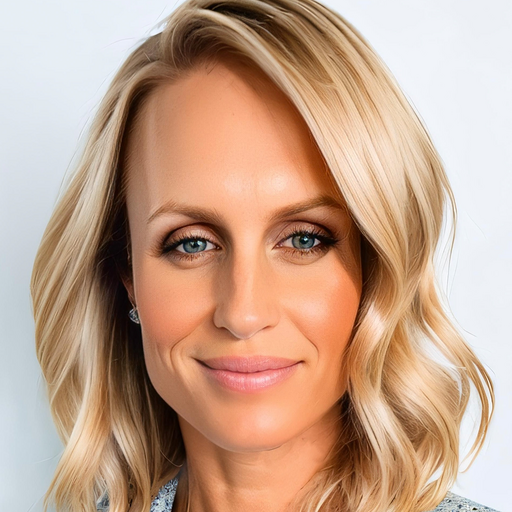
I’m Coach Kelli, a devoted CrossFit gym owner with 15 years of experience managing my facility, along with owning yoga studios and wellness centers. Beyond the fitness world, I have a passion for cooking, cherish moments with my children and family, and find joy in spending time outside. Having experienced the highs and lows, I’m dedicated to leveraging my expertise to help you grow and succeed on your fitness journey.

I’m Coach Kelli, a devoted CrossFit gym owner with 15 years of experience managing my facility, along with owning yoga studios and wellness centers. Beyond the fitness world, I have a passion for cooking, cherish moments with my children and family, and find joy in spending time outside. Having experienced the highs and lows, I’m dedicated to leveraging my expertise to help you grow and succeed on your fitness journey.


